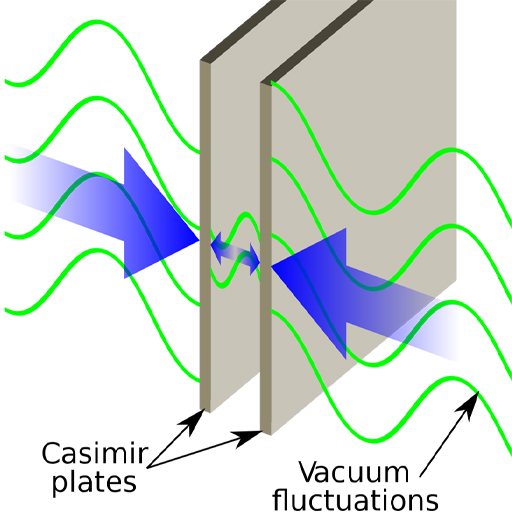3.5 Quantum fluctuations
Another mind-boggling consequence of Heisenberg’s uncertainty principle is that there’s no such thing as empty space, or a complete lack of motion. Everything is subject to ‘quantum fluctuations’. In fact, even if a space was initially completely empty, particles would spontaneously form and vanish in it.
Surprisingly, the effects of quantum fluctuations can be measured, and they have been experimentally observed. The most prominent example of this is the ‘Casimir effect’, named after the Dutch physicist Henrik Casimir. Two uncharged conductive plates are placed a few nanometres apart in a vacuum. They experience a force, due to the effect that the plates have on the quantum fluctuations between them.
This raises some fundamental questions about our understanding of the world. In classical theory, you start with an empty space, and consider the motion of particles in this space, all subject to certain forces. In quantum theory, this basic assumption of an empty space is already flawed: it contains fluctuations, and the particles you’re studying will interact with these fluctuations. This makes the system much more complicated to analyse.

